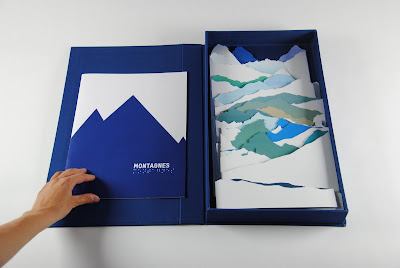For this Workshop with Mr Komagata, I chose to work on a book for partially sighted people. My goal was to create a book designed for children but also for adult. A simple book to start learning things on a subject like pictures book we red in our childhood. Instead of creating a pictures book, I thought this book has to be more like a game to engage other sense like touch and to lead up people put the shapes in the space.
I finally chose to work on mountains, because they are imposing, they are relaxing for the sight, they stand out in simple shapes against the sky. First, people distinguish their blurry shapes in the distance then they become clearer. Moreover, a physical link exists between people and the mountains : travelling in such landscape involved many senses as smell, sight, touch, hearing…
These are the feelings, that I intended to relate by this book.
I focused on the world's 18 biggest peaks, and chose to class them from the biggest to the smallest. I did large gradations by silkscreening and cut the shapes of these mountains out the gradations with care to respect the proportions of there height. The biggest is 1meter length by 50 cm height and the smallest, 1m length by 5,7cm height.
All along my researches I decided to transform this book into a box containing all the mountains and a booklet. All the mountains are classed from the biggest (EVEREST) to the smallest (VESUVE) in the booklet and come along with a few information. This way, the reader has to find which shapes goes with which mountains.
The final version of the project is a box (dimensions 30x51cm) containing all the mountains and the booklet. My goal is to make the reader learn a few things about the world surrounding him.










